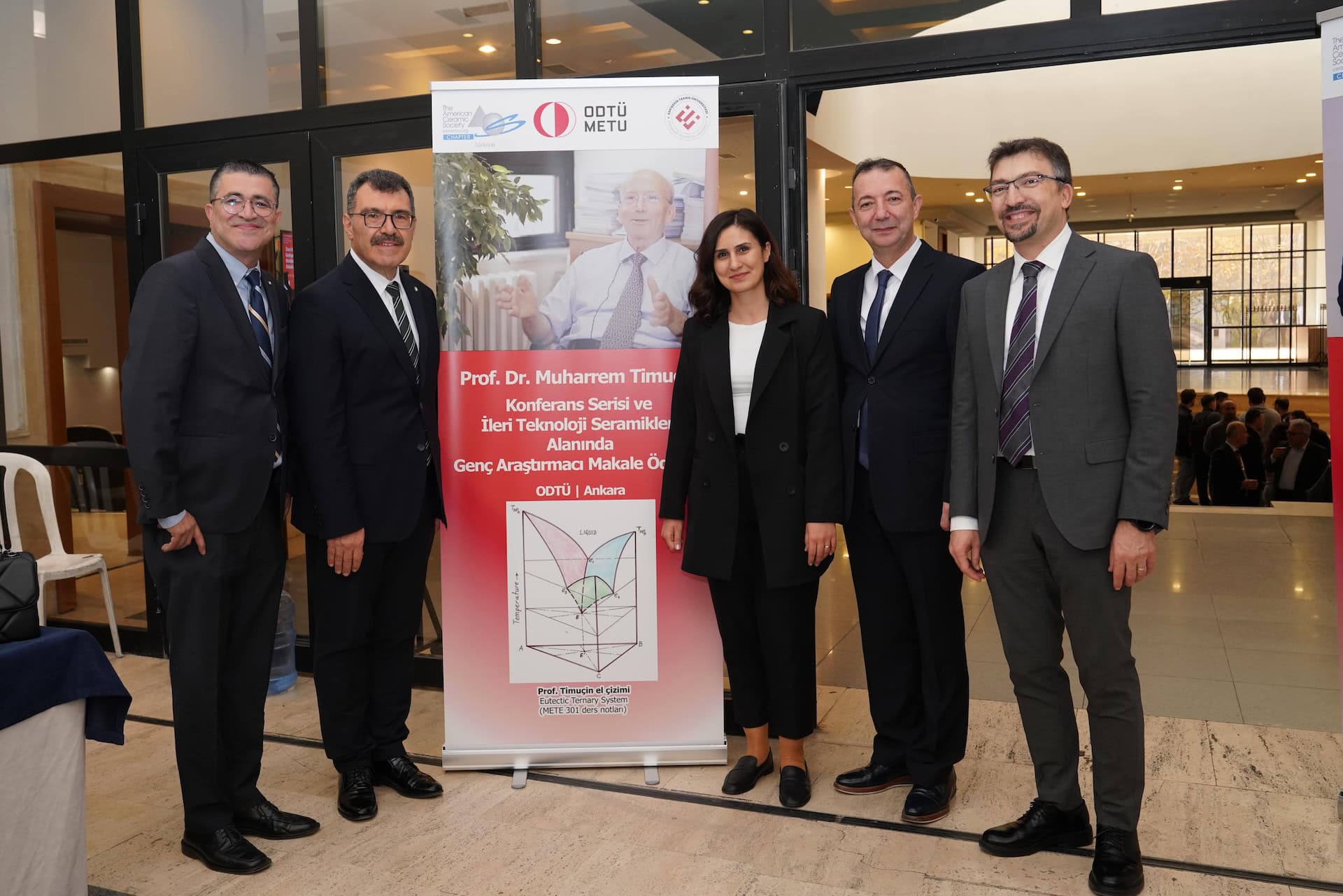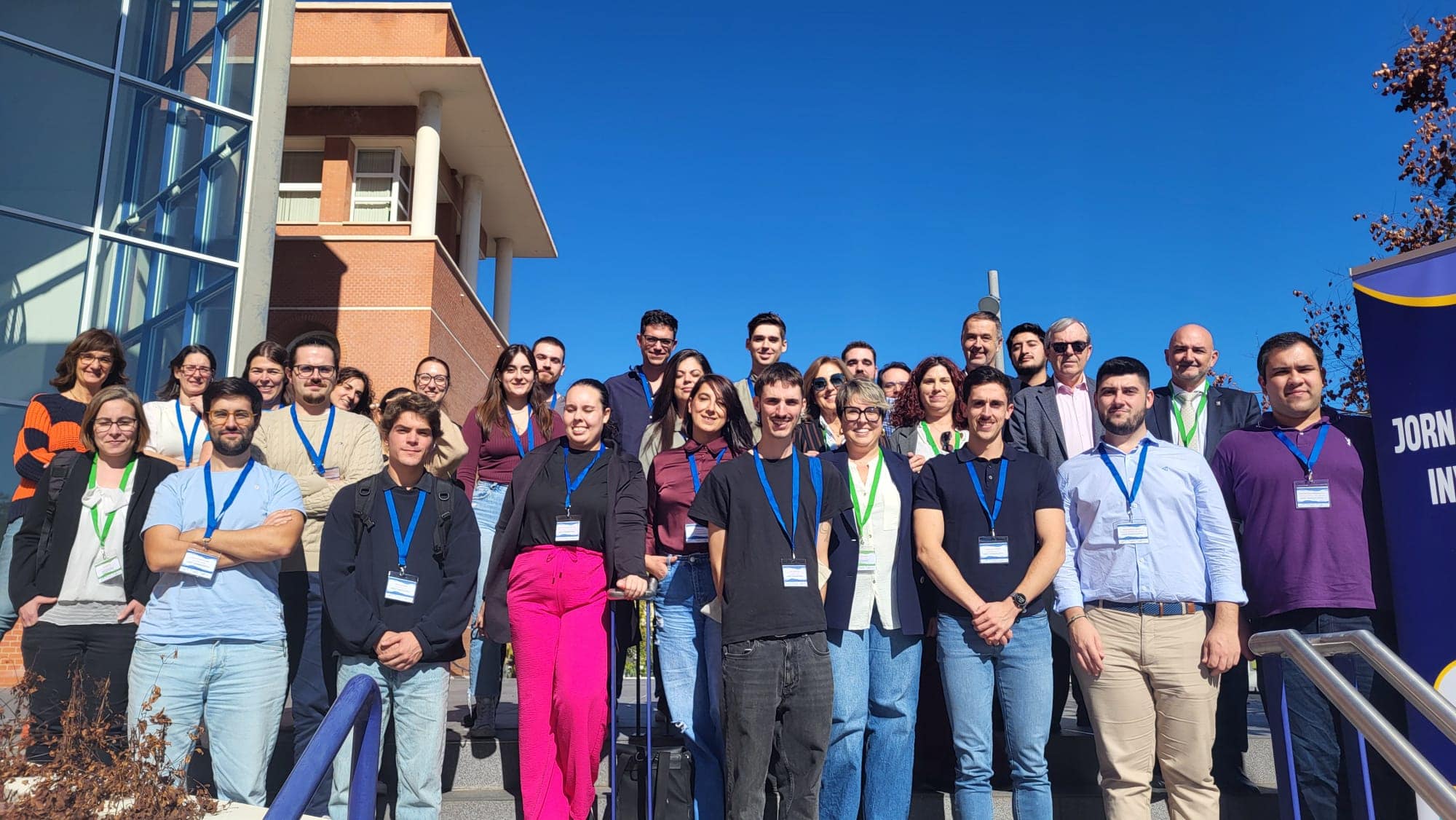
[Image above] The spirit of ICACC—Professors Michel Barsoum (right) and Miladin Radovic (second from right) discuss research results with their respective students during a lull in the conference. Credit: ACerS
The International Conference on Advanced Ceramics and Composites (ICACC) in Daytona Beach, Fla., never disappoints in terms of quality, size, and the unexpected. Usually, weather serves as the wildcard, but this year it was the shutdown of the United States federal government. The three-day shutdown overlapped with the first day of the conference, forcing federal employees to cancel their travel plans. The shutdown wreaked havoc on the schedule, and organizers rallied to rearrange sessions and talks. By Tuesday the government was open again, and many federal government employees resurrected plans and came to Florida.
More than 1,100 attendees came, with more than half coming from 37 countries outside the United States. The program offered about 1,000 presentations in 17 symposia, three focus sessions, two poster sessions, and two special symposia—the Global Young Investigators Forum and the Mrityunjay Singh Honorary Symposium.
Check out images here from the many activities that took place at the conference.
ACerS Engineering Ceramics Division (ECD) organizes the conferences and also holds its annual business meeting. ECD included many opportunities for students to present their work, engage with peers, and learn more about their chosen professions.
“The number of young people is increasing,” Manabu Fukushima, conference program chair says. “A young woman from Nigeria, attending for the first time, told us that coming to the conference was her dream. This was most meaningful for me.” ECD helped support her trip to participate in the Global Young Investigators Forum.
ICACC opened Monday with its traditional plenary session with ECD’s Mueller Award lecture, Bridge Builder Award, and two plenary talks. ACerS past president and Distinguished Life Member, George Wicks, delivered the Mueller Award lecture on the topic of porous wall hollow glass microspheres. The technology originated during Wick’s career at Savannah River National Laboratory, and continued post-retirement with ARC in South Carolina. Wicks described applications in medicine for medicine delivery to tumors, for example, and to fight counterfeiting of electronic devices.
Yanchun Zhou reported on his group’s work on MAX phases and some interesting new compositions based on borides instead of carbides. Applications for the materials include nuclear fuel cladding materials, heating elements in harsh environments, smart thermal barrier coatings, and SOFC interconnect materials.
Most of us have heard about “big data” or informatics applied to engineering. Plenary speaker Frank Muecklich’s talk focused on deep learning and “fully convolutional neural networks” to interpret microstructure, especially in three dimensions. “Deep learning with FCNN drastically outperforms human experts and classical image analysis,” he says.
Least technical but most provocative was a talk by Oxford professor Richard Brooks on research motivations, of which he suggests three: catastrophe avoidance, curiosity/adventure, and engineering/technology. He commented on many factors influencing research, such as excessive evaluation; trends toward funding large, multi-institution proposals; limitations of peer review, etc. Brooks cites three elements that contribute to successful research: command of the technical material, serendipity, and personal impact. Regarding serendipity, Brooks says, “If you’re doing research, it’s you versus nature. Sometimes nature is friendly; sometimes nature doesn’t give a damn.”
While nature may be fickle in its friendliness, much effort goes into making ICACC conducive to making friends. Events included networking events for new ACerS members, young professionals, Corporate Partners, and students.
“We especially appreciate the support from our exhibitors, sponsors and Corporate Partners for allowing us to offer networking events that allowed us to deliver a much more rewarding conference experience,” Mark Mecklenborg, ACerS director of meetings says.
In addition, the exposition that accompanies ICACC provided a forum for 32 exhibitors to present their products and services and for the conference poster session. An interesting mix of familiar companies, as well as newcomers exhibited.
One newcomer, Polymer Chemistry Innovations, Inc., a developer and manufacturer of specialty polymers, may seem like an unusual vendor at ICACC’s exposition. The company participated in the conference to gain a better understanding of ceramic materials and production methods and came away feeling their resources were well spent. According to Carly Gordon, director of marketing, “We are excited to learn about the different areas of ceramic processing. These give our R&D new areas to explore and expand markets for our current products.” They look forward to further interactions with the Society, its members and the ICACC conference.
We hope you do, too. Please mark your calendars for next year’s ICACC January 27–Feb 1, 2019, in Daytona Beach. And, let’s hope we can avoid stormy weather and politics!

At the Expo. Credit: ACerS

ACerS president Mike Alexander (left) recognizes ICACC 2018 program chair Manabu Fukushima. Credit: ACerS

ACerS director of membership, Kevin Thompson (right), greets a member at the registration area. Credit: ACerS

Plenary speaker Richard Brooks (right) speaks with Frank Muecklich, also a plenary speaker, during a break. Credit: ACerS
Did you find this article interesting? Subscribe to the Ceramic Tech Today newsletter to continue to read more articles about the latest news in the ceramic and glass industry! Visit this link to get started.
Author
Eileen De Guire
Spotlight Categories
- Meeting Highlights


